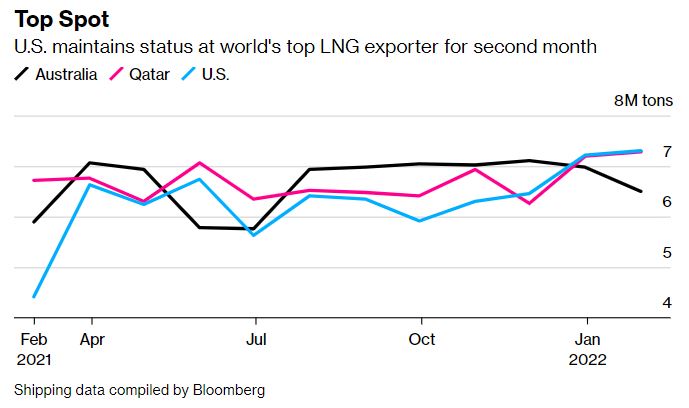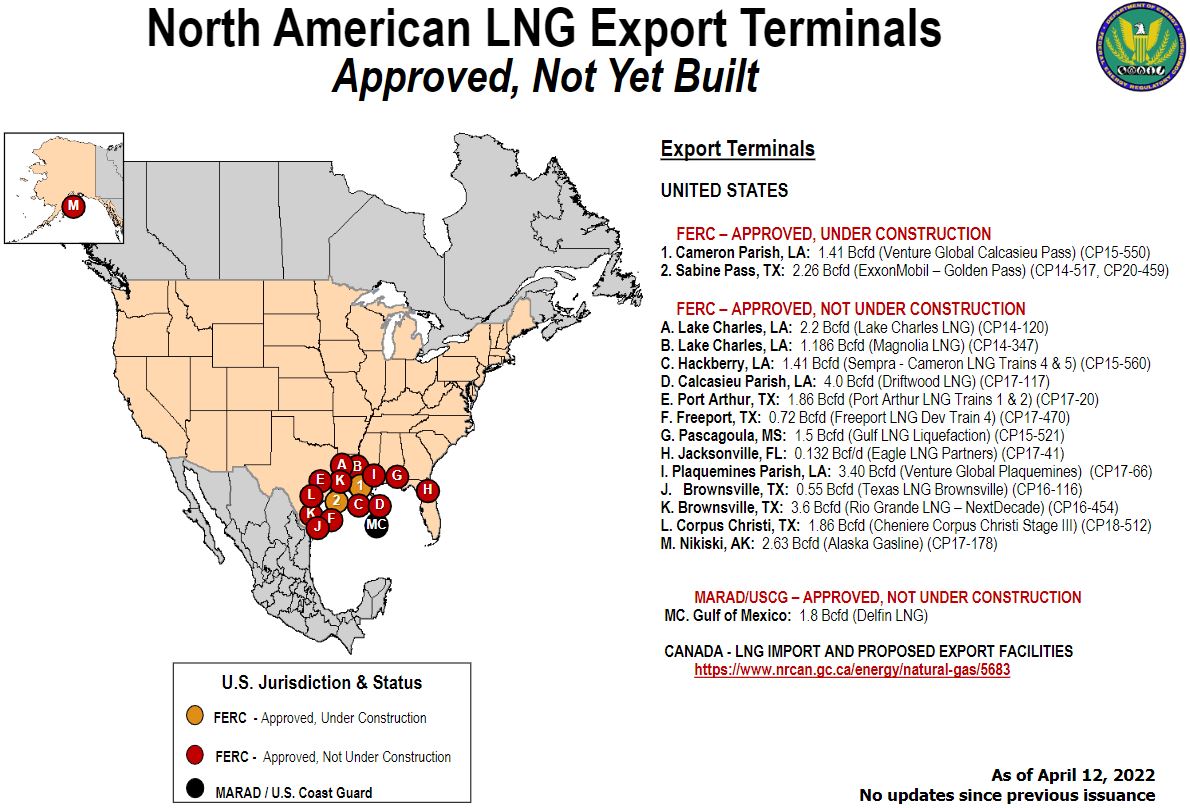The US has already overhauled Australia’s LNG super boom to become the largest exporter of gas in the world and it has another 1.5mt per month coming on stream this year:
But the real action now is the second round of LNG super boom in the US. I have pointed out for ages that there is an astonishing pipeline of US LNG projects with export approval and even more coming up from behind:
Advertisement
By my conversion, this is nearly 250mt of LNG per annum. 2.5x Australian exports. It’s not all going to get up but the Ukraine has begun to seal the deals. Bloomie conversions are smaller than my own but still enormous:



